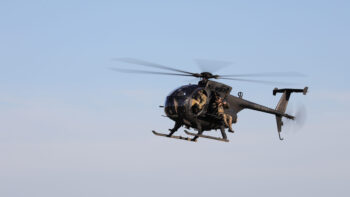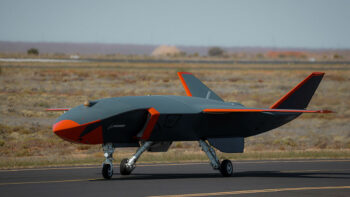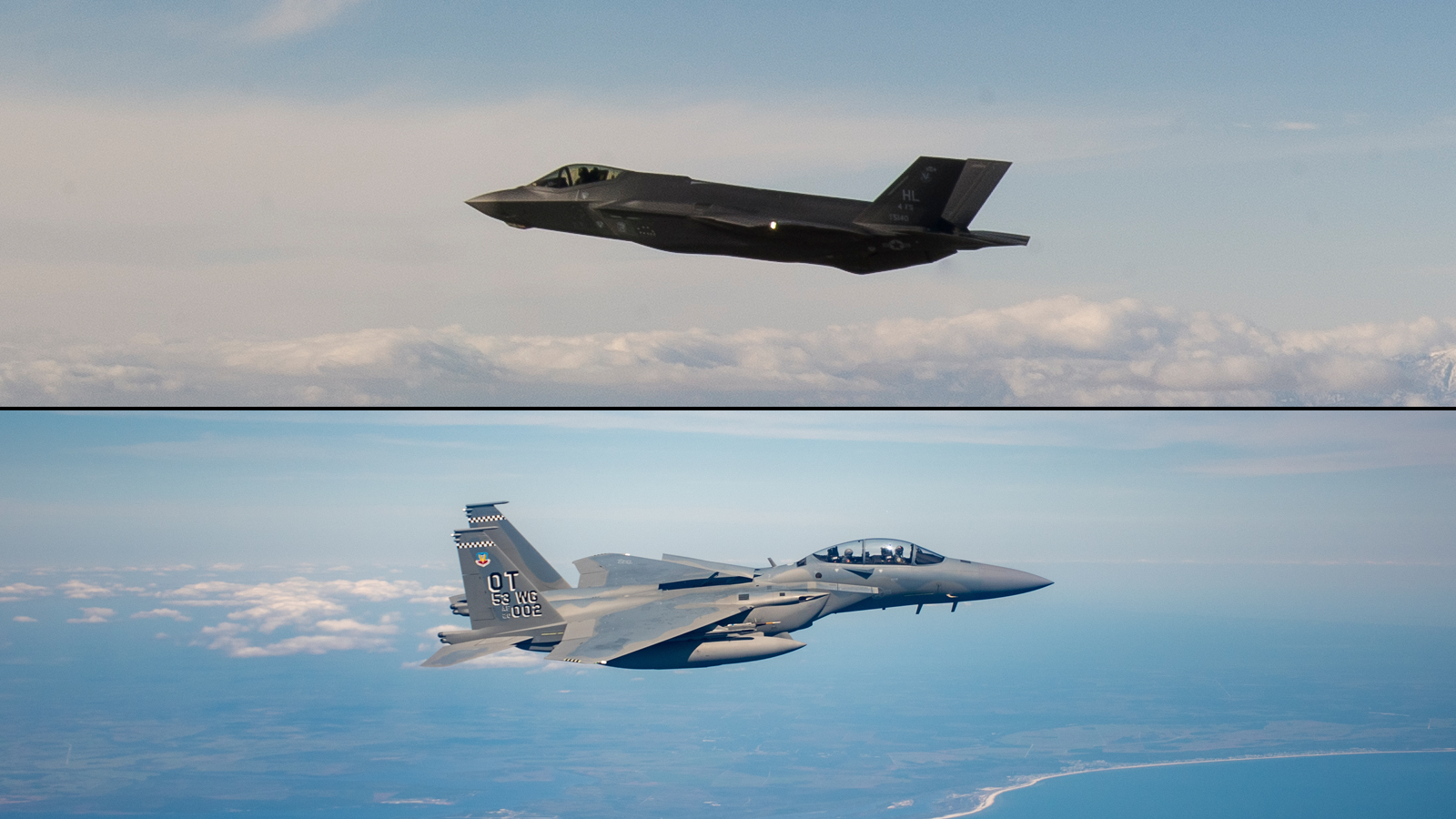
An F-35A (above) and an F-15EX (below). (Images via DVIDS)
WASHINGTON — The flyaway cost for the F-15EX Eagle II is approximately $90 million for each aircraft in the program’s second production lot, about $7.5 million more than the newest price for an F-35A, Breaking Defense has learned.
The Air Force has confirmed to Breaking Defense that a contract for the next three production lots of the Boeing-made F-15EX was finalized on Sept. 28, a major milestone for the program. But the $90 million per unit cost in the contract — a number that is expected to grow in successive lots — will likely raise eyebrows among critics both within and outside the service who argue that officials should focus on buying more F-35s.
Under the new agreement, the price for an F-15EX will start at “approximately” $90 million for lot 2, rise to $97 million in lot 3 and then dip to $94 million in lot 4, according to an Air Force spokesperson. The two parties previously finalized a deal for the aircraft’s first lot in November 2022, setting a flyaway price of $80.5 million for six jets with two test aircraft already purchased — meaning the costs on the F-15EX are going up per unit year over year until the fourth lot is introduced. (The Air Force measures flyaway price in then-year dollars, which are adjusted for inflation.)
As a cost comparison, F-35 Joint Program Office spokesman Russ Goemaere told Breaking Defense that the Air Force’s variant of the stealth fighter has an “average” flyaway cost of $82.5 million for the jet’s 15th, 16th and 17th production lots, which will be delivered in calendar years 2023, 2024 and 2025.
Goemaere further stated that the average flyaway price for the vertical takeoff and landing F-35B is $109 million, and that the carrier-launched F-35C comes in at $102.1 million for lots 15-17. Neither variant is used by the Air Force.
The Air Force spokesperson said the service’s agreement with Boeing on the F-15EX finalized existing undefinitized contract actions (UCA) for the second and third lots, a mechanism whereby the Pentagon can issue dollar awards to get work started until specifics like price can be ironed out. The fourth lot was awarded without a UCA, the spokesperson said, bringing the cumulative value of the three lots to $3.9 billion for 48 F-15EXs.
RELATED: Boeing offers F-15EX for Poland, but details are scant
A Boeing spokesperson told Breaking Defense that the second and third lots would consist of 12 fighters, and the fourth would feature 24. Lot 4 deliveries are scheduled to start in 2026, the spokesperson said. (The contractor is in the process of delivering the first lot consisting of eight fighters.)
“It’s essential that we provide the best value for our customers while offering an unmatched capability in the F-15EX. We are investing in our people and their development. We are using new automation in our factories. We are leveraging Lean practices. We have implemented many other processes, with our teams and our suppliers, designed to improve all areas of work to include reducing costs,” Mark Sears, vice president of Boeing fighters, told Breaking Defense in a statement.
“Inflation and its impacts are real and felt across our industry, but we continue to make the changes necessary to keep costs in check while growing our production capacity to meet demand,” he added.
Goemaere, the F-35 spokesperson, said in a statement: “The F-35 Joint Program Office is committed to finding cost reductions across the acquisition lifecycle. We are proud of the learning that has occurred and reduced costs for vastly increased fifth-generation capability that surpasses many fourth-generation aircraft in production today.”
“We continue to deliver cost-competitive, unparalleled 5th Generation capabilities in the F-35. Lot over lot, the aircraft delivers enhanced capabilities to stay ahead of threats while managing costs,” F-35 builder Lockheed Martin said in a statement to Breaking Defense.
Not So Simple Math
It’s worth noting that various price tag figures exist for both jets, due in part to how manufacturers present the costs. For instance, when the announcement of a new lot agreement on F-35s happens, it is just for the jet bodies themselves, with an engine announcement coming later. Hence, “flyaway” costs can provide a closer approximation to judge the price tag of two different planes, as that covers what the jets should have when sitting on the runway ready to go.
Even still, when asked by Breaking Defense, the two programs offered definitions that appeared to have some slight differences.
For example, the Air Force spokesperson said the F-15EX’s flyaway cost encompasses the “Major End Item (Airframe, EPAWSS [Eagle Passive Active Warning Survivability Suite], Engines, Radars and all other associated subsystems on the aircraft), as well as other applicable costs such as Production Non-Recurring Engineering, Systems Engineering and Program Management, and Engineering Change Orders.”
According to Goemaere, the F-35 program calculates the flyaway cost as consisting of the stealth fighter’s “Hardware (Airframe, Vehicle Systems, Mission Systems, Engine [and] Engineering Change Order) costs.”
Heather Penney, a senior resident fellow at the Mitchell Institute, said some of the differences could be explained by the programs being in different stages of production.
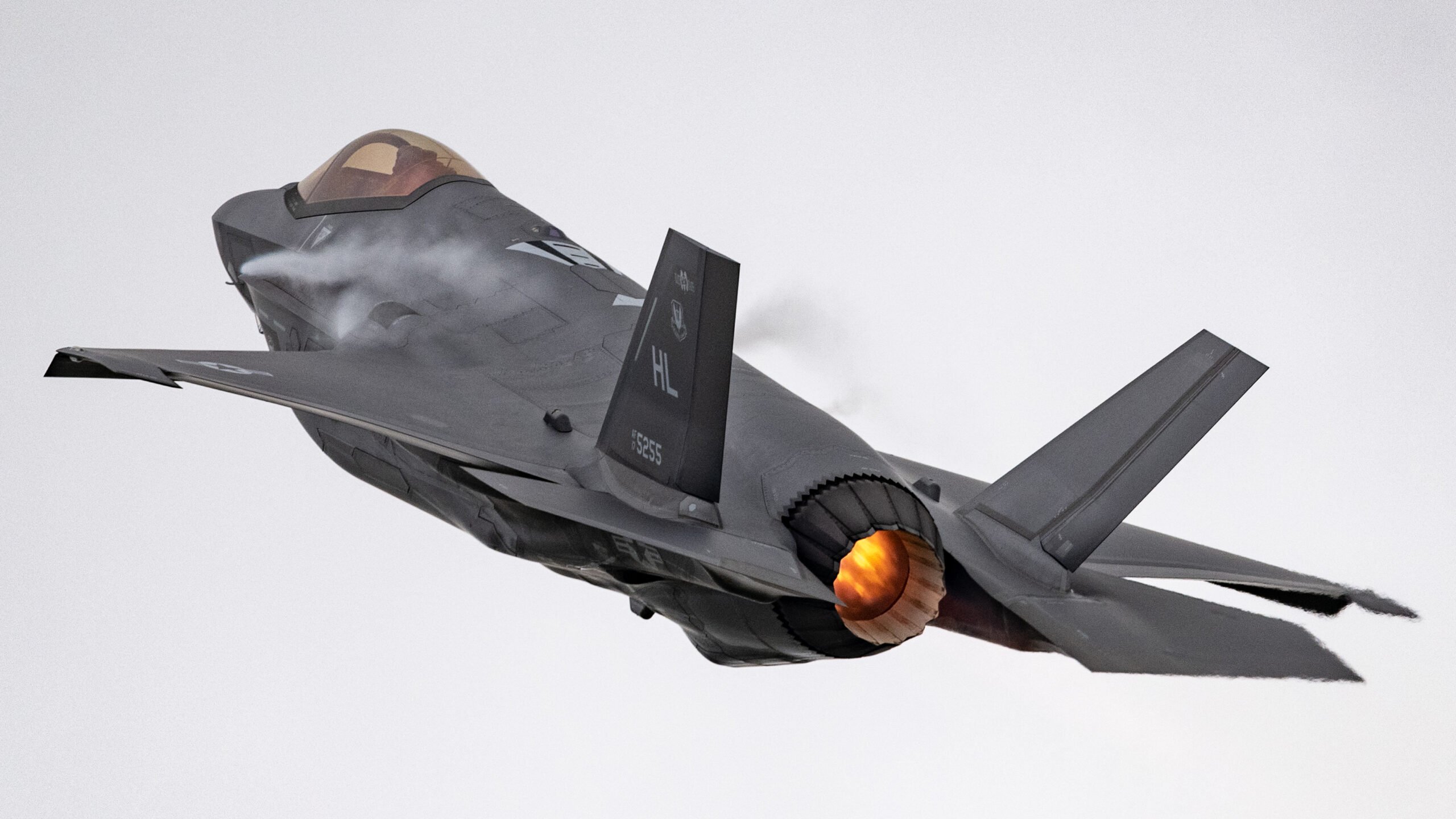
U.S. Air Force Maj. Kristin “BEO” Wolfe, F-35A Lightning II Demonstration Team pilot and commander, performs for F-135 engine maintainers assigned to the Oklahoma City Air Logistics Complex, at Tinker Air Force Base, Okla., May 25, 2021. (U.S. Air Force photo by Staff Sergeant Thomas Barley)
“Because [F-15EX is] kind of a new start, if you will, they’ve got production non-recurring engineering. So that’s the tooling and engineering stuff that you would need to include to get the production line up on-ramp,” she said in an interview.
However, JV Venable, a senior research fellow for defense policy at the Heritage Foundation and skeptic of the F-15EX program, said he was doubtful of how much cost could be associated with the fighter’s production. Many of the aircraft’s technologies aren’t new, Venable said, except mainly the EPAWSS electronic warfare suite.
“It’s almost entirely the EPAWSS system. And so, if you’re looking for that being an extraordinarily large cost, I don’t think it’s going to be,” he said.
Moreover, though the price tags are the most recent figures available for the two jets, they’re both somewhat of a snapshot in time: the lot 15-17 deal for the F-35 was negotiated for over a year and ultimately finalized in December 2022, nearly a year prior to the F-15EX agreement, and the F-35 program is currently negotiating at least two more lots.
Two Fighters, Cost And Capability
Overall, Penney said the costs for the two fighters are realistic given their respective program’s differences.
“I do believe that the flyaway costs are reasonable, given the production rates of each individual line, how the companies are able to amortize cost and overhead across those production rates, and where each program is on their learning curve,” she said.
Venable, who has previously questioned the service’s accounting in budget books, raised further concerns about the reliability of the numbers. Additionally, he pointed to the prices of the two fighters, arguing that the Air Force would get a better bang for its buck with the F-35. “You’re getting a fourth-generation capability,” he said of buying the F-15EX.
Penney said the two fighters’ roles are distinct, which warrants different considerations.
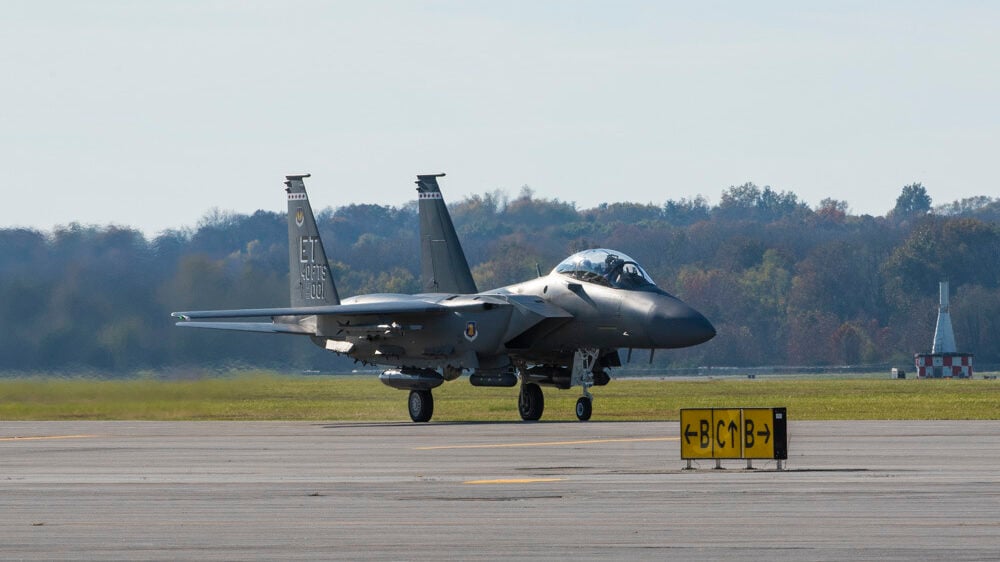
An F-15EX fighter jet taxis to its parking spot at Wright-Patterson Air Force Base, Ohio, Nov. 8, 2021. The jet visited Wright-Patt to give the Air Force Life Cycle Management Center’s F-15EX program office the opportunity to see the aircraft up close. (U.S. Air Force photo by Jaima Fogg)
“The costs are difficult to compare because the capabilities and the use cases for both aircraft are so very different. Not all fighters are the same. And so people will be tempted to make an apples-to-apples comparison, and that’s just not appropriate when we look at how very different the capabilities between F-35 and F-15EX are, as well as how those programs are structured,” she said.
Whereas the F-35 is well-suited for penetrating anti-access/area denial zones and is slated for cutting-edge upgrades in future “blocks,” the F-15EX could work “behind the frontlines” of the F-35 and additionally perform homeland defense missions, according to Penney. Besides the F-15EX’s larger weapons carriage capacity — the F-35 typically sacrifices some weapon space by mounting its weapons internally to maximize stealth — Penney said the two fighters will be optimized for different weapons in the future, and thus different combat roles.
“But I think what’s really unique about F-15EX is its SWaP-C [size, weight, power and cost],” Penney added, pointing to the fighter’s ability to generate “a lot of power.
“So if Boeing is able to put in a thermal management system that really allows them to take advantage of the electrical generation on the F-15EX,” she continued, “the potential there — there’s some more interesting things that it could do.” (The F-35 program is currently weighing an overhaul to its current thermal management system to account for future cooling challenges.)
Both analysts, however, agreed that one important consideration for the F-15EX is diversity in the industrial base. Without the F-15EX line, the Air Force would likely have to rely solely on the F-35 for new fighter deliveries — a dependency that could put the service in a bind especially if it wants to increase fighter procurement in the near-term, since the F-35 production line is currently humming at max capacity. Venable, however, pointed to other ways to support the fighter industrial base by propping other production lines like the F/A-18; the F-16 is also still in production, but only for foreign customers.
Venable and Penney also raised alarm about the Air Force’s shrinking fighter force, with Penney underscoring potential issues associated with sustaining a relatively small fleet of fighters like the F-15EX. For its original program of record, the Air Force sought 144 F-15EXs, a number that has dipped to 80 and gone back up to now 104. The Air Force’s F-35 program of record, which seeks 1,763 of the fighters, has remained stable for years, though some analysts have raised doubts that number will be met.
What the industrial base needs is certainty, Penney said, arguing that the Air Force’s indecision benefits no one.
“As the Air Force goes up and down in their program of record, that is going to put everyone else from Boeing all the way down on the end of the whip,” she said.
Eight ‘capability coalitions’ are rushing arms to Ukraine. Here’s who will donate what. (EXPLAINER)
NATO has established eight different capability coalitions designed to get critical systems or ammo into Ukrainian hands quickly. Here’s a deep dive into how they’re all faring.






















